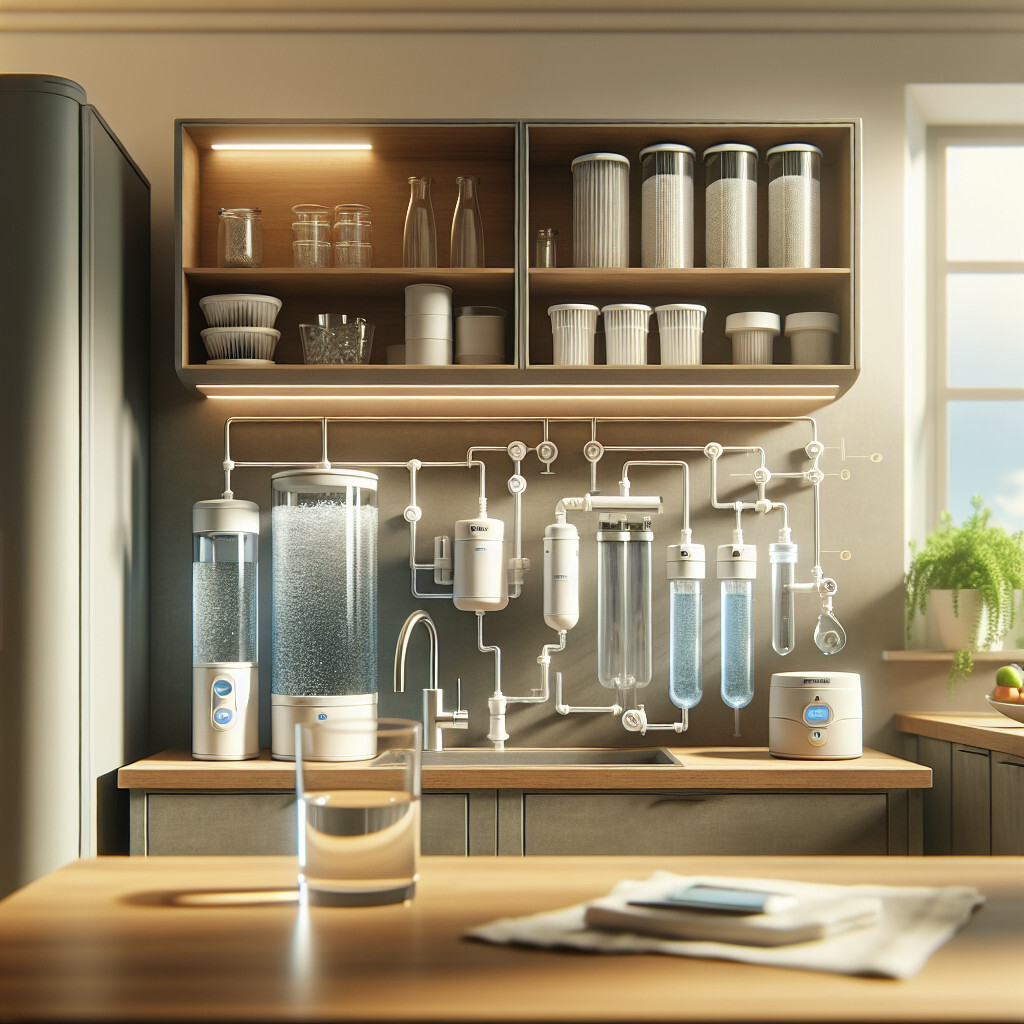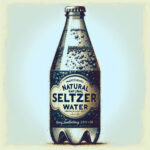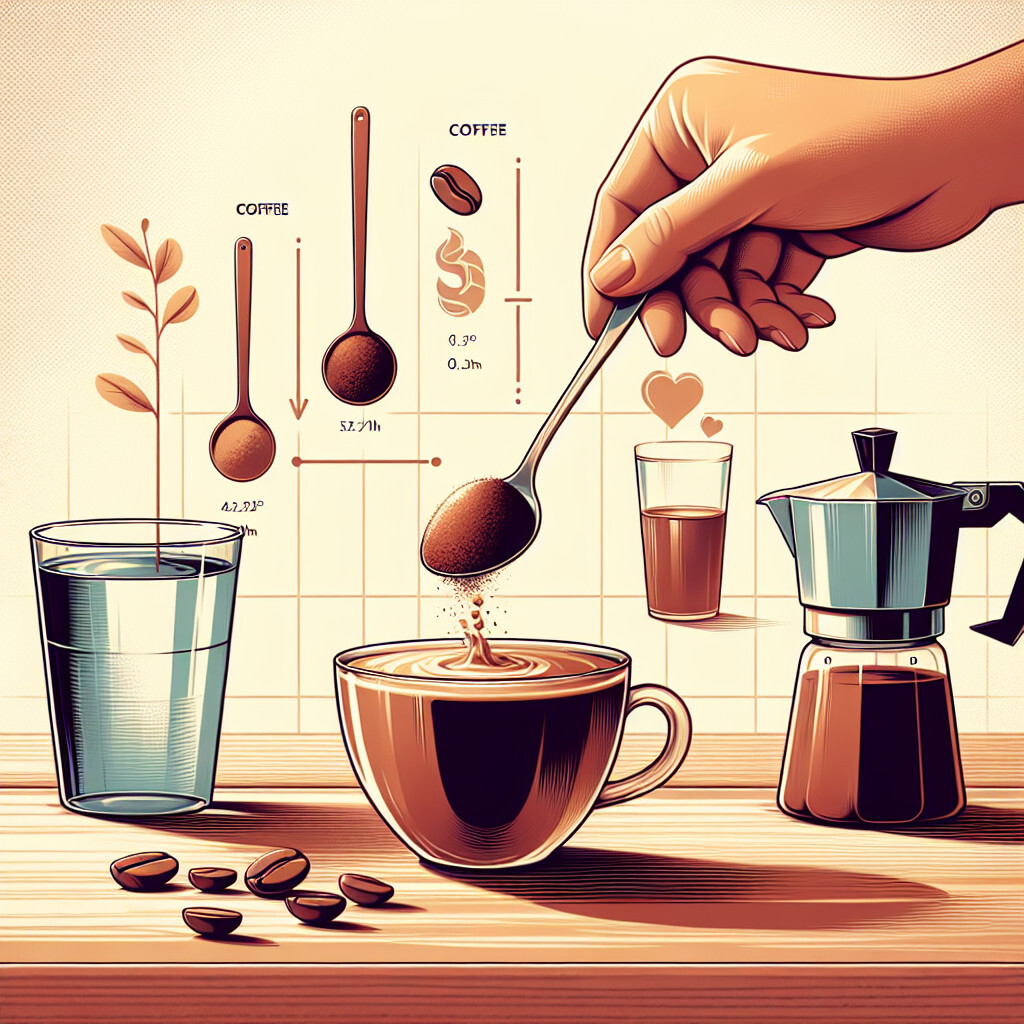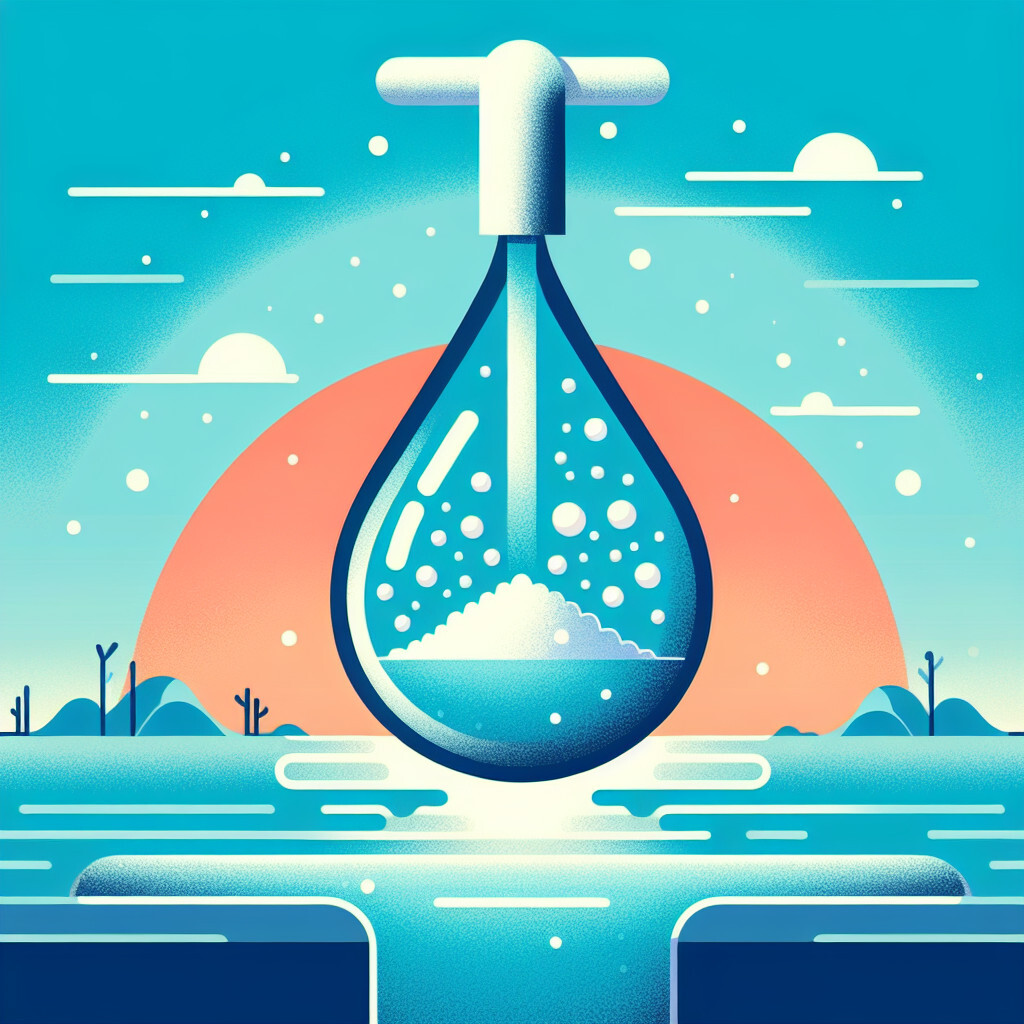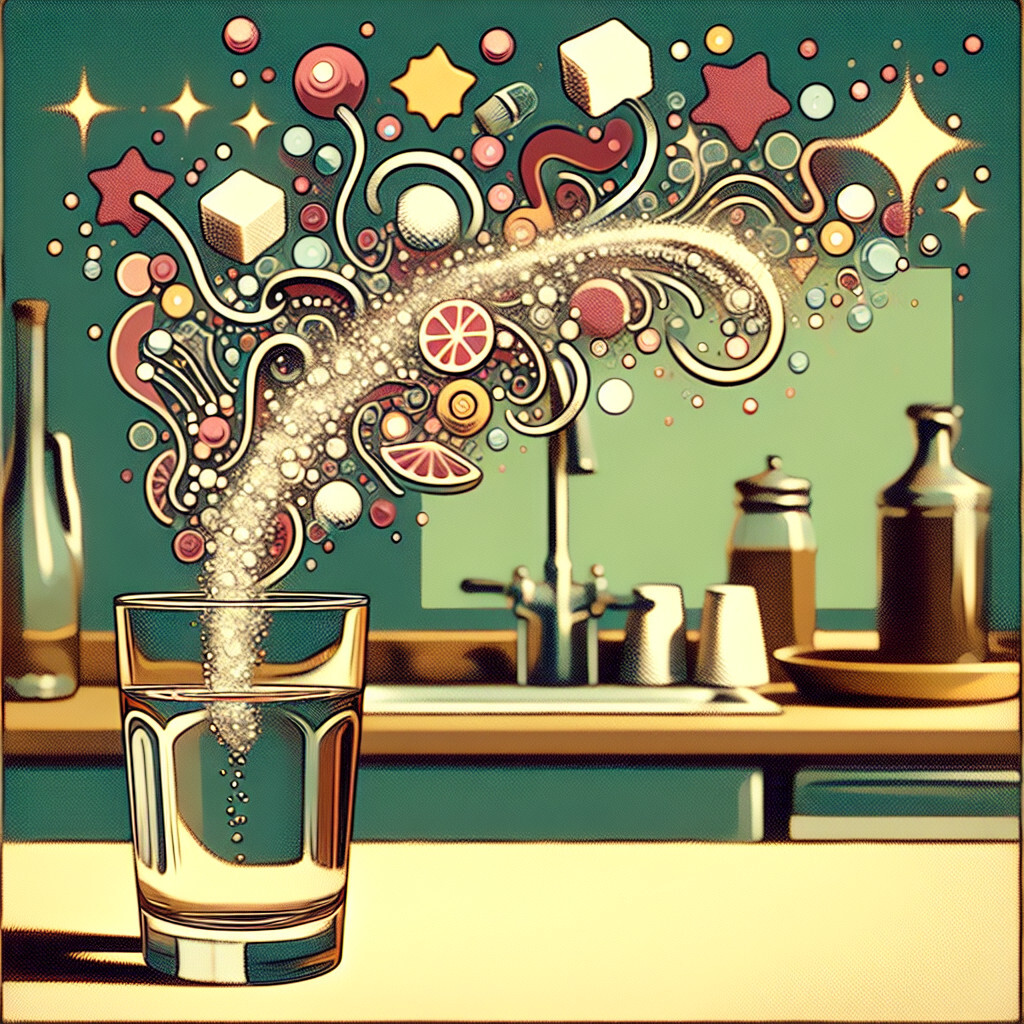-
Table of Contents
- Introduction
- Effective Methods to Enhance Your Home’s Drinking Water Quality
- Understanding the Importance of Water Filtration Systems for Better Quality Drinking Water
- DIY Techniques to Improve the Quality of Your Drinking Water
- Exploring the Role of Regular Maintenance in Ensuring High-Quality Drinking Water
- The Ultimate Guide to Removing Contaminants from Your Home’s Drinking Water
- Q&A
- Conclusion
“Enhancing Health, One Sip at a Time: Improve Your Home’s Drinking Water Quality!”
Introduction
Improving drinking water quality at home is a crucial aspect of maintaining good health and wellbeing. This guide provides comprehensive information on various methods to enhance the quality of your drinking water, including filtration systems, boiling, distillation, and using purification tablets. It also discusses the importance of regular testing and maintenance of water sources. By following these steps, you can ensure that your drinking water is safe, clean, and free from harmful contaminants.
Effective Methods to Enhance Your Home’s Drinking Water Quality
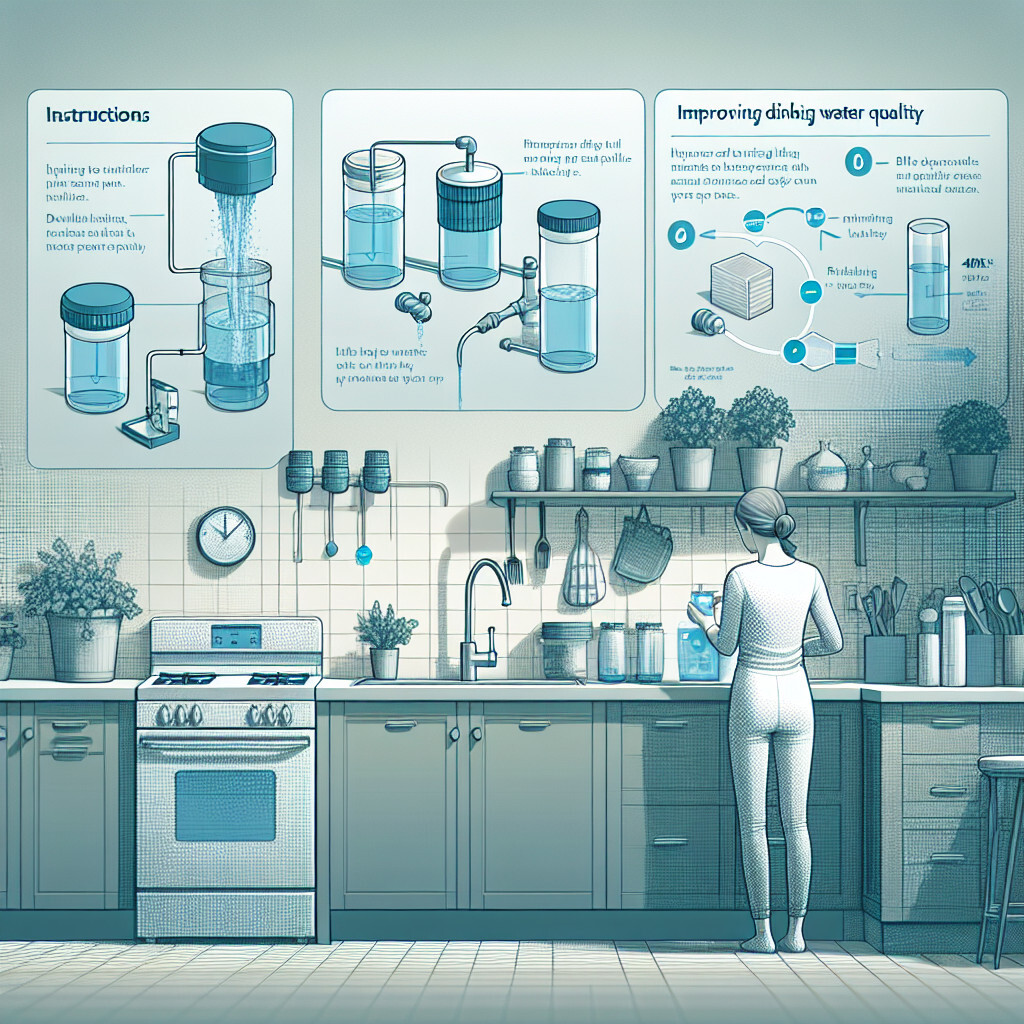
Improving the quality of your home’s drinking water is a crucial step towards ensuring the health and well-being of your family. The quality of water we consume directly impacts our health, making it essential to ensure that it is free from contaminants and impurities. There are several effective methods to enhance your home’s drinking water quality, and this article will guide you through some of the most efficient ones.
Firstly, one of the simplest and most cost-effective ways to improve your drinking water quality is by using a water filter. Water filters come in various types, including activated carbon filters, reverse osmosis filters, and ultraviolet disinfection filters. Each type of filter has its unique way of removing different contaminants. For instance, activated carbon filters are excellent at removing organic compounds and chlorine, while reverse osmosis filters are effective in eliminating heavy metals and salts. Ultraviolet disinfection filters, on the other hand, are perfect for killing bacteria and viruses. Therefore, it’s essential to understand the type of contaminants present in your water to choose the most suitable filter.
Secondly, boiling your water is another effective method to improve its quality. Boiling water kills bacteria, viruses, and parasites, making it safe for consumption. However, it’s important to note that boiling does not remove chemical contaminants or improve the taste and odor of the water. Therefore, it’s best used in combination with other methods, such as filtration.
Another method to enhance your home’s drinking water quality is by installing a water softener. Hard water, which contains high levels of calcium and magnesium, can cause various problems, including scale buildup in pipes and appliances, dry skin and hair, and even certain health issues. A water softener works by replacing these hard minerals with softer ones, such as sodium or potassium, improving the water’s taste and preventing the problems associated with hard water.
Regular testing of your water is also crucial in maintaining its quality. Water testing kits are readily available and can detect a wide range of contaminants, including bacteria, lead, pesticides, and nitrates. Regular testing allows you to monitor your water’s quality and take necessary actions if any contaminants are detected.
Lastly, maintaining your home’s plumbing system can significantly improve your drinking water quality. Old, corroded pipes can leach harmful substances into your water, affecting its taste and safety. Therefore, regular inspection and replacement of old pipes can help prevent contamination and ensure the quality of your water.
In conclusion, improving your home’s drinking water quality involves a combination of methods, including using water filters, boiling water, installing a water softener, regular testing, and maintaining your plumbing system. By implementing these methods, you can ensure that your family has access to safe, clean, and tasty drinking water. Remember, the quality of water you consume directly impacts your health, making it essential to take proactive steps to enhance it.
Understanding the Importance of Water Filtration Systems for Better Quality Drinking Water
Water is the essence of life, and its quality directly impacts our health and wellbeing. As such, improving the quality of drinking water at home is a matter of utmost importance. One of the most effective ways to ensure the purity of your drinking water is by using a water filtration system.
Water filtration systems are designed to remove impurities and contaminants from water, making it safer and often more palatable. These systems can filter out a wide range of contaminants, including bacteria, viruses, heavy metals, and chemical pollutants. By doing so, they not only improve the taste and odor of your water but also protect you and your family from potential health risks associated with these contaminants.
The process of water filtration involves passing water through a filter that traps the contaminants. The filtered water is then ready for consumption. There are various types of water filtration systems available in the market, each with its unique features and benefits. These include activated carbon filters, reverse osmosis systems, ultraviolet disinfection systems, and distillation units, among others.
Activated carbon filters are popular due to their ability to remove organic compounds, chlorine, and other chemicals that affect the taste and smell of water. On the other hand, reverse osmosis systems are highly effective in removing a wide range of contaminants, including heavy metals and certain types of bacteria and viruses. Ultraviolet disinfection systems use UV light to kill bacteria and viruses, while distillation units work by boiling water and then condensing the steam back into liquid form, leaving behind most contaminants.
Choosing the right water filtration system for your home depends on the quality of your source water and the specific contaminants you want to remove. It’s advisable to have your water tested to identify the contaminants present. This information can guide you in selecting the most suitable filtration system.
While the initial cost of installing a water filtration system may seem high, the long-term benefits make it a worthwhile investment. Not only will you have access to cleaner, safer drinking water, but you’ll also save on the cost of buying bottled water. Moreover, by reducing your reliance on bottled water, you’ll be contributing to environmental conservation efforts, as plastic bottles are a major source of pollution.
Maintaining your water filtration system is also crucial to ensure its effectiveness over time. This includes regularly replacing the filters as per the manufacturer’s instructions. Failure to do so can result in reduced filtration performance and even damage to the system.
In conclusion, a water filtration system is a valuable addition to any home. It provides a reliable solution to improve the quality of your drinking water, safeguarding the health of your family. By understanding the different types of systems available and their capabilities, you can make an informed decision that best suits your needs. Remember, the quality of your water is too important to leave to chance. Invest in a water filtration system and enjoy the peace of mind that comes with knowing your drinking water is clean and safe.
DIY Techniques to Improve the Quality of Your Drinking Water
Improving the quality of your drinking water at home is not only essential for your health but also contributes to a better taste and odor. There are several do-it-yourself (DIY) techniques that you can employ to enhance the quality of your drinking water.
Firstly, boiling is one of the most straightforward and effective methods to purify water. It kills bacteria, viruses, and other microorganisms, making the water safe for consumption. However, boiling does not remove chemical contaminants or improve the taste and odor of the water. Therefore, it is best used in conjunction with other purification methods.
Secondly, using a water filter is another excellent way to improve the quality of your drinking water. There are various types of water filters available in the market, including activated carbon filters, reverse osmosis filters, and ultraviolet light filters. Activated carbon filters are effective in removing organic compounds, chlorine, and improve the taste and odor of the water. On the other hand, reverse osmosis filters are efficient in eliminating a wide range of contaminants, including heavy metals, salts, and nitrates. Ultraviolet light filters use UV light to kill bacteria and other microorganisms. It’s important to choose a water filter that suits your specific needs and the quality of your tap water.
Thirdly, distillation is another method that can be used to improve the quality of drinking water. This process involves boiling the water and then condensing the steam back into liquid form. Distillation effectively removes bacteria, viruses, heavy metals, and salts. However, it may not remove all types of chemical contaminants. Also, distilled water may taste flat to some people because the process removes minerals that contribute to the water’s taste.
In addition to these methods, you can also use water purification tablets or drops. These products contain substances that kill bacteria, viruses, and other microorganisms in the water. They are easy to use and portable, making them ideal for use when traveling or in emergency situations. However, they may not be as effective in removing chemical contaminants.
Lastly, maintaining your home’s plumbing system can also contribute to the quality of your drinking water. Old, corroded pipes can leach harmful substances into the water. Therefore, it’s essential to regularly check your plumbing system and replace old pipes when necessary.
In conclusion, improving the quality of your drinking water at home involves a combination of different methods. Boiling, using a water filter, distillation, using water purification tablets or drops, and maintaining your home’s plumbing system are all effective ways to enhance the quality of your drinking water. It’s important to remember that the best method depends on the quality of your tap water and your specific needs. Therefore, it’s advisable to test your water to identify the contaminants present before choosing a purification method. By taking these steps, you can ensure that you and your family have access to safe, clean, and tasty drinking water.
Exploring the Role of Regular Maintenance in Ensuring High-Quality Drinking Water
The quality of drinking water is a critical aspect of maintaining good health. While most of us rely on municipal water supplies, it’s important to remember that the quality of water can vary significantly depending on the source and the treatment it undergoes. Therefore, it’s crucial to take proactive steps to improve the quality of drinking water at home. One of the most effective ways to ensure high-quality drinking water is through regular maintenance of your water system.
Regular maintenance plays a pivotal role in ensuring the quality of your drinking water. It involves a series of actions, including regular testing, cleaning, and replacing parts of your water system as necessary. These actions help to prevent the buildup of harmful substances that can compromise the quality of your water.
Water testing is the first step in regular maintenance. It helps to identify any potential contaminants in your water supply. These contaminants can range from harmful bacteria and viruses to heavy metals and chemical pollutants. Once you know what you’re dealing with, you can take the necessary steps to address the issue. For instance, if your water test reveals the presence of harmful bacteria, you can install a UV water purifier to kill these microorganisms.
Cleaning your water system is another crucial aspect of regular maintenance. Over time, sediment and mineral deposits can build up in your pipes and fixtures, leading to a decrease in water quality. Regular cleaning helps to remove these deposits, ensuring that your water remains clean and safe to drink. This can be as simple as regularly cleaning your faucet aerators and showerheads, or it may involve more complex tasks like descaling your water heater.
Replacing worn-out parts of your water system is also an important part of regular maintenance. For instance, if you use a water filter, you need to replace the filter cartridges regularly to ensure they continue to effectively remove contaminants from your water. Similarly, if you have a water softener, you’ll need to replenish the salt supply regularly to keep it functioning properly.
In addition to these steps, it’s also important to consider the source of your water. If you rely on a well for your water supply, regular maintenance should also include well inspections to ensure the well is properly sealed and not contaminated. If you rely on municipal water, you may want to consider installing a whole-house water filtration system to remove any contaminants that may be present in the water supply.
Regular maintenance of your water system is not just about ensuring the quality of your drinking water. It’s also about protecting your health and the health of your family. By taking proactive steps to maintain your water system, you can ensure that your drinking water is not only clean and safe, but also tastes great.
In conclusion, regular maintenance plays a crucial role in ensuring high-quality drinking water at home. It involves regular testing, cleaning, and replacing parts of your water system as necessary. By taking these steps, you can protect your health and enjoy the benefits of clean, safe, and tasty drinking water.
The Ultimate Guide to Removing Contaminants from Your Home’s Drinking Water
Water is the essence of life, and having access to clean, safe drinking water is a fundamental human right. However, the quality of drinking water can vary greatly depending on where you live, and even the cleanest-looking water can contain harmful contaminants. This article will guide you through the process of improving the quality of your home’s drinking water by removing these contaminants.
Firstly, it’s important to understand what contaminants might be present in your water. Common contaminants include bacteria, viruses, heavy metals like lead and mercury, and chemicals such as chlorine and pesticides. These can enter your water supply in a variety of ways, from agricultural runoff to outdated plumbing systems. While many of these contaminants are removed or reduced to safe levels by municipal water treatment facilities, some can still make their way into your home’s water supply.
To determine what contaminants are in your water, you can have it tested. Many companies offer home water testing kits that can detect a wide range of contaminants. Alternatively, you can hire a professional to do the testing for you. Once you know what you’re dealing with, you can take steps to remove these contaminants and improve your water’s quality.
One of the most effective ways to remove contaminants from your water is to use a water filtration system. There are many types of water filters available, each designed to remove different types of contaminants. Activated carbon filters, for example, are excellent at removing organic compounds and chlorine, but they’re not as effective at removing heavy metals or bacteria. Reverse osmosis systems, on the other hand, can remove a wide range of contaminants, including heavy metals and bacteria, but they can be expensive and require regular maintenance.
When choosing a water filter, it’s important to consider not only what contaminants it can remove, but also its cost, ease of use, and maintenance requirements. Some filters, like faucet-mounted or pitcher filters, are relatively inexpensive and easy to use, but they may not remove as many contaminants as more complex systems. It’s also important to remember that no filter can remove 100% of contaminants, so it’s a good idea to have your water tested regularly to ensure your filter is working effectively.
In addition to using a water filter, there are other steps you can take to improve your water’s quality. For example, if your water comes from a private well, regular testing and maintenance can help prevent contamination. If your water is supplied by a municipality, you can find out more about its quality and treatment processes by contacting your local water department.
Furthermore, if your home has old plumbing, replacing lead or copper pipes with newer materials can reduce the risk of heavy metals leaching into your water. And if your water has a high mineral content, a water softener can help prevent scale buildup in your pipes and appliances.
In conclusion, improving the quality of your home’s drinking water involves understanding what contaminants are present, choosing the right water filtration system, and taking additional steps to prevent contamination. By taking these steps, you can ensure that your water is not only safe to drink, but also tastes great. After all, clean water is not just about health – it’s also about enjoying the simple, refreshing pleasure of a glass of water.
Q&A
1. Question: What are some ways to improve drinking water quality at home?
Answer: Some ways to improve drinking water quality at home include using a water filter, boiling the water, using water purification tablets, installing a water softener, and regularly cleaning and maintaining your water storage tanks and pipes.
2. Question: How does a water filter improve drinking water quality?
Answer: A water filter removes impurities from water by reducing contamination through a physical barrier, a chemical process, or a biological process. It can remove bacteria, viruses, heavy metals, and chemical pollutants, improving the taste and odor of the water.
3. Question: Can boiling water improve its quality?
Answer: Yes, boiling water can kill bacteria and other pathogens, making it safer to drink. However, it does not remove chemical pollutants or heavy metals.
4. Question: What are water purification tablets and how do they work?
Answer: Water purification tablets are small tablets that contain chemicals that kill bacteria, viruses, and cysts in water. They are typically used for emergency situations or for travel when clean water is not readily available.
5. Question: How does a water softener improve water quality?
Answer: A water softener removes minerals like calcium and magnesium that cause water hardness. This can improve the taste of the water and prevent scale buildup in pipes and appliances, extending their lifespan.
Conclusion
In conclusion, improving drinking water quality at home can be achieved through various methods such as regular cleaning of water storage tanks, using water purification systems like filters, reverse osmosis systems, or UV light sterilizers. Additionally, boiling water or using disinfection tablets can also help. Regular testing of water quality is also essential to ensure its safety and cleanliness. Furthermore, maintaining the plumbing system in good condition and using safe materials for pipes can prevent contamination. Lastly, awareness and education about water safety and hygiene can significantly contribute to improving drinking water quality at home.

